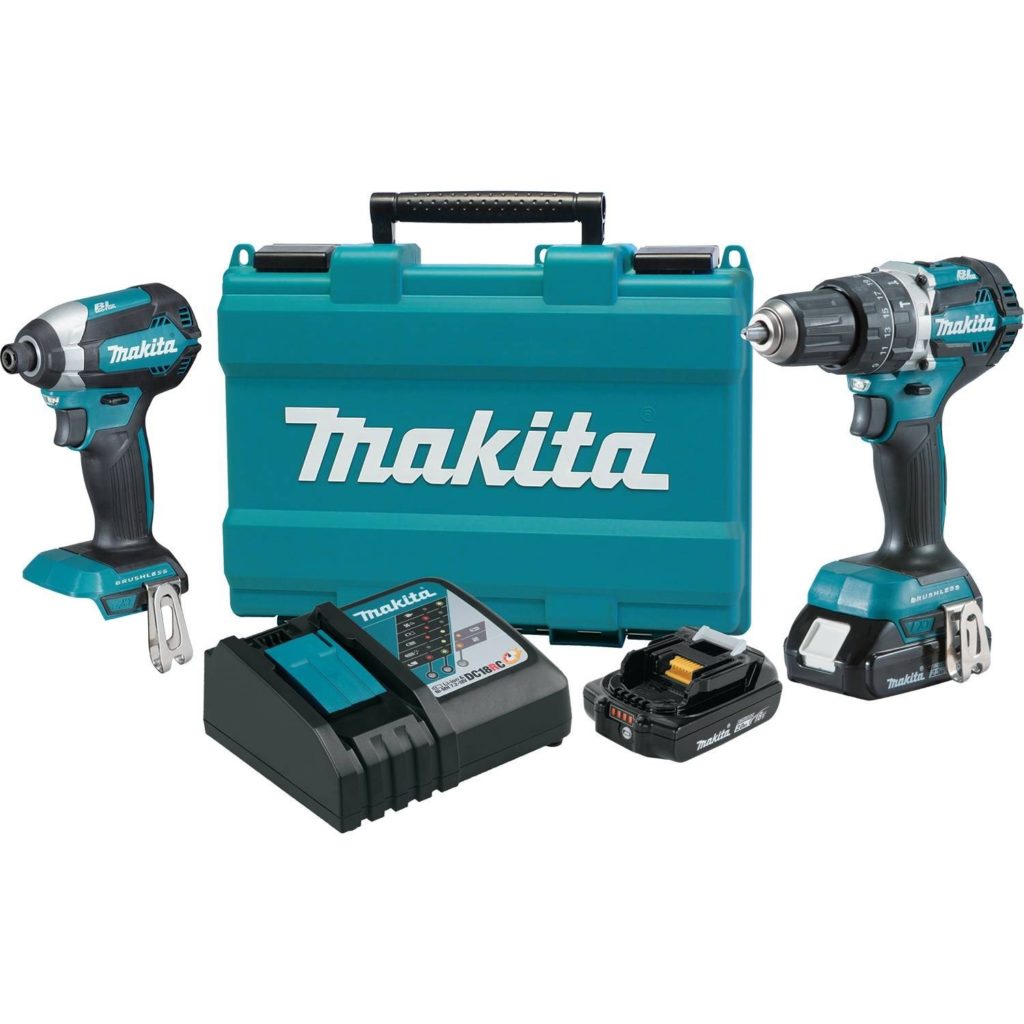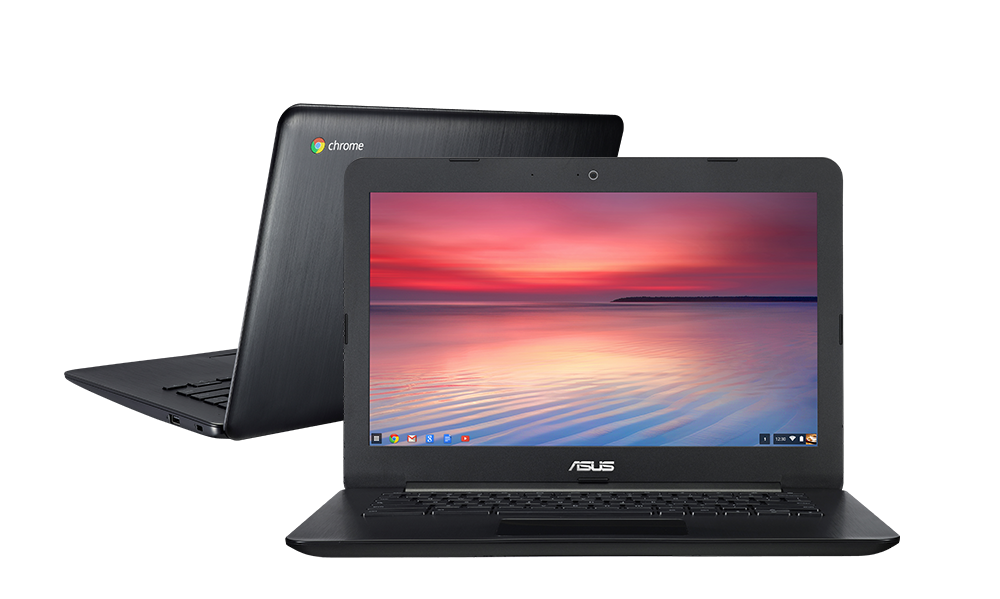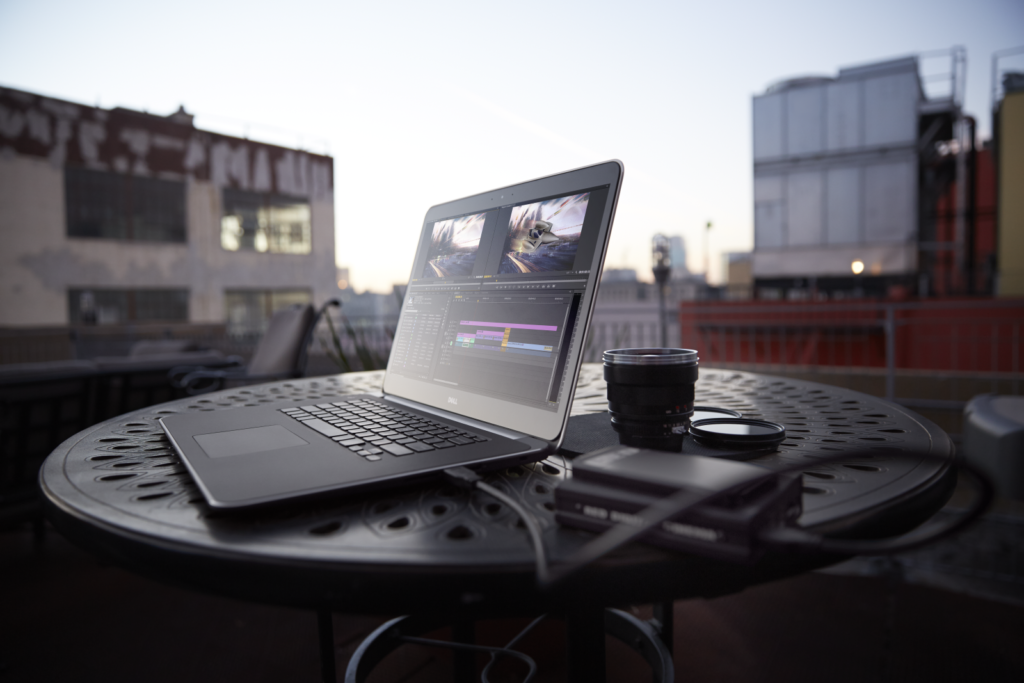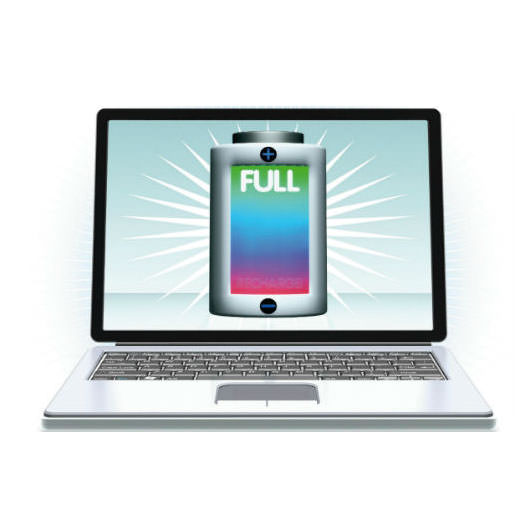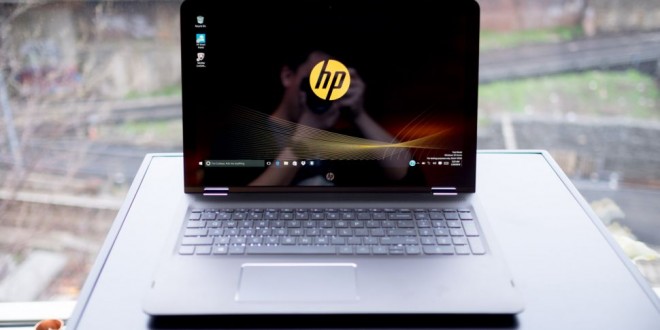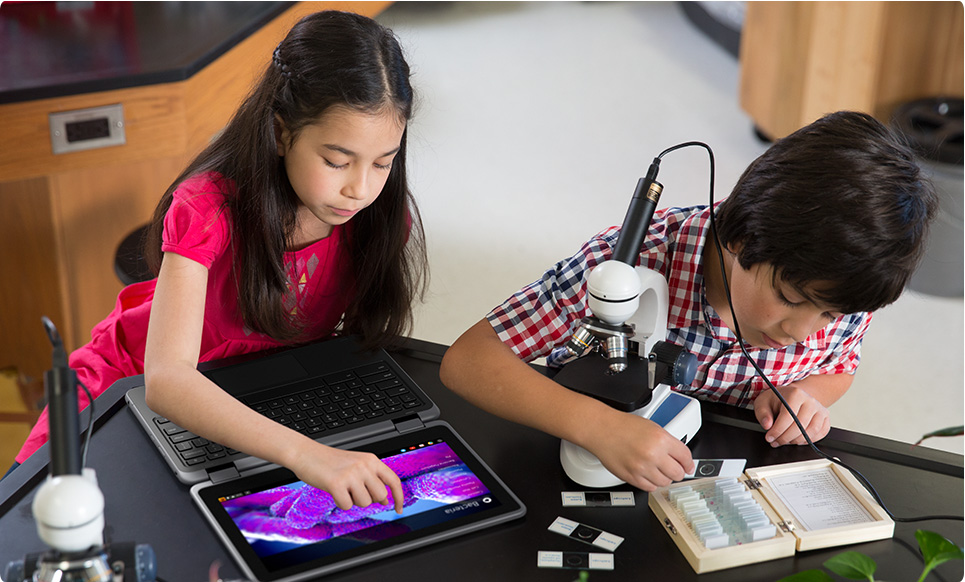Makita Sub-Compact Drill and Impact Driver – 18v Goes Ninja
MAKITA recently made a strange move, a new color 18V cordless tools lined up, waiting for release, black! They sent us their 18V LXT compact Suite (cx200rb) a few months ago, including MAKITA compact drilling (xfd11zb) and MAKITA compact impact driver (xdt15zb). We are sure their brand manager will not be fired because of the new color scheme, so let’s talk about these new tools, and why do you want to have them.
As we all know, it’s a cordless world out there when it comes to power tools. Even outdoor power equipment is making the rapid progression toward cordless technology. Just about every power tool, including those many thought would “never” go cordless, are available in cordless platforms. All that cordless goodness does come at a cost. For one thing, things can get messy when it comes to battery platforms and chargers. I often dream of a day when all the tool companies come together to pursue a universal standard for chargers and batteries. From a consumer standpoint, being able to use one charger and any brand’s battery would make life a lot easier.
Unfortunately, that’s not likely to happen for a variety of reasons. For one, many tool brands invest a great deal in innovation focused on batteries, chargers and the tech that enables batteries to communicate with both chargers and the tools themselves. Those same companies aren’t going to be excited to join in a sharing circle of competitors, singing Kumbaya as they exchange their hard-fought intellectual property. Brands also benefit from practical brand loyalty here too. The tool companies that offer a large variety of the most appealing tools can encourage some buyers to stick to a single brand’s cordless platform exclusively. If you don’t believe that, check out some of the photos posted to social media showing loyal tool users showcasing mountains of red, blue, green or yellow cordless tools.
Even if you stick to one brand, you’re likely going to have tools in both 12v and 18v lines. Which brings us to this current review. Makita is looking to bridge the gap between 12v and 18v lines by providing the compact form factor users love in the 12v platform, with much of the power and performance users love about the 18v platform. For some of you, this might mean you leave some or all of your 12v gear behind and just carry your 18v tools, batteries and charger.
Makita Sub-Compact Drill / Driver & Impact Driver – Get a Grip on the Ergonomics
One of the great things about 12v tools is their ergonomics. Many 12v drills and drivers just feel better than some of their bulkier 18v counterparts. The Makita sub-compact drill and it’s sibling impact driver feel more like a 12v tool in your hand, and that’s thanks to Makita’s choice to use a brushless motor that’s smaller in size than what you would find on a comparable 18v tool. While some bulkier 18v tools can feel awkward and cumbersome to wield, the Makita sub-compact tools instead feel like a natural extension of your arm (albeit with a lot more torque). And, because there isn’t a 12v MAKITA 192681-5 Power Tool Battery crammed into it, the trim and slender grip on the sub-compact actually feels even better than many chunkier 12v grips.
Sub-Compact Weight – Float Like a Butterfly, Sting Like a Bee
The sub-compact benefits don’t stop with how the tool feels in your grip, they’re also relatively light, especially if you’re using the lightweight Makita 2.0 Ah battery. At just 2.8 and 2.6 lbs for the drill/driver and impact driver respectively (with the 2.0 battery), arm fatigue is kept to a minimum.
Makita 18V Sub-Compact Drill & Impact Driver Features and Performance
I used the 18V Sub-Compact Drill and Driver on a variety of tasks including installing recessed alarm sensors, drilling glass, assembling office furniture, installing a flat screen, installing a bench vise on a bamboo bench-top, removing a glass shower door assembly, installing closet railings, drilling into plaster, and general tasks for around the home. Some of that work was done off-site and these Sub-Compact tools were compelling to bring along since I suspected I might need more juice than a 12v might provide, but I also didn’t want to lug bulkier tools along. I dropped the Makita Sub-Compact Drill and driver into a tool bag filled with other tools and I didn’t feel like I was lugging my shop with me.
The Makita Sub-Compact 1/2″ Driver Drill (XFD11)
This nimble powerhouse delivers 0-1700 RPM with a tiny 6-3/8″ overall length. You can adjust fastening torque from 20 different settings via the ring next to the chuck, or set it in drill mode to disable the clutch. The tool features two speeds, with the higher speed intended for lower-load activities. I found the optional belt clip handy given that the tool isn’t likely one you’ll slip into your toolbelt pouches. That’s one downside to the Sub-Compact line – 12v tools (assuming you’re using a lower capacity slim battery) are sleek enough that many users store them in their tool pouches. Despite the Sub-Compact’s very trim size, you won’t be likely to do that given the bulkier 18V form-factor. One little known fact is that you can use this tool like a manual screwdriver by switching the forward/reverse switch to neutral. However Makita recommends you don’t get carried away and try to loosen rusted lugnuts this way. Frankly, assuming you have both these tools on hand, you’ll probably want to use the driver drill more or less exclusively for drilling and the Sub-Compact Impact Driver for fasteners.
While not exactly ninja-quiet, the impact driver delivers a punishing 0-3900 impacts per minute to coerce fasteners into submission. It sports an even smaller 5-5/16″ overall length, making it ideal for tight-quarters fastener combat. At the base of the tool, you’ll find a somewhat confusing array of options for controlling the impact force. I’ll walk through each here, since they are not intuitively obvious (or, they weren’t to me anyway).
There are three separate areas with indicator lights “S” for “Soft”, “H” for Hard and “A” for Assist Mode. Soft mode is engaged when just the light under the S is lit. It’s best for working with smaller fasteners and more delicate materials. Maximum impacts in S mode is 1600 IPM. If you’re in “H” or hard mode both the S and H lights are lit. I found this a little confusing as typically indicator lights are on one setting or another, not both. Presumably Makita lit both to indicate you can still operate the tool in the lower IPM range, but I think a single indicator light would make things more clear to users. In hard mode the tool delivers up to 3900 IPM’s. Plenty of impacts for most screws and reasonably-sizes bolts out there. Lastly, “A” or assist mode will automagically start screws slow and then gear up to higher speeds and impacts once you’re on track. This is great for longer fasteners and if you’re tool lazy to adjust speed yourself. “A” mode has the same maximums as the Hard setting by the way. In a world of Low-Medium-High or 1-2-3 settings, I think S-H-A isn’t as clear as it could be.
Both tools have an onboard LED light just under the chuck / bit holder that lights during operation and stays lit about 10 second after. The light position casts a pretty significant shadow and isn’t super-bright, but it’s still useful if you’re working in a dark space. I found it very helpful working in a couple dark closets. As with many other Makita tools, you’ll find a fuel gauge on the battery itself rather than on the body of the tool, which is handy to for checking charge level on batteries that aren’t slid into a tool.
Another nice bonus to the 18V MAKITA 1822 Power Tool Battery is that it makes a much more stable stand than trying to balance the barrel-style 12V battery tools (many of which will simply fall over). You can set these Makita Sub-Compact tools on the ground, a nearby shelf or table and they’re ready to grab and go.
The 18V LXT Sub-Compact Combo Kit (Cx200RB) we tested comes in a cube style carrying case that, sadly, is not black (which means it does NOT match my ninja outfit). While it handily fits the tools and charger, with room to spare for batteries and accessories, I can’t see carrying that cube anywhere, even with the included shoulder strap. The cube is bulky and better-suited to storing your lunch. With ninja-style tools like these, I’ll instead tuck them away in more agile storage when transporting them.
The new 18V LXT Sub-Compact line from Makita has a lot going for it: great ergonomics, compact size, light weight and plenty of power for most applications you would want to use them for. Whether you’re a pro looking to minimize how much gear you’re toting, or you’re a homeowner looking for the convenience of a 12v tool, with many of the power advantages of an 18V tool, the Makita Sub-Compact Drill/Driver and Impact Driver is a great value and a winning combination. Plus, they’re black, which is awesome!
You can find the 18V LXT Sub-Compact Combo Kit (Cx200RB) for a very reasonable $239 price tag at The Home Depot. The kit includes both Sub-Compact tools, 18V charger, two 2.0AH batteries and the lunch box, errr, I mean storage case.
How to Improve Notebook Battery Life in 3 Easy Steps
Forget performance, forget gigahertz, forget RAM!! One thing, laptops, tablets is really important, or Ultrabook users’ battery life. With the development of processing capacity, many of us are looking for energy efficiency and battery life, rather than raw material processing capacity. Even so, today’s low-end devices can still run out of batteries.
Get your laptop’s battery lasting longer with these three steps:
1 – Dim the lights, please!
The display backlight can be a huge power drain, especially on a 15” or 17” laptop. If you’re on the go, make sure to turn down the brightness to the lowest level you can tolerate. For example, my laptop gives me 15 brightness levels; zero turns the display off, while 15 is maximum brightness. When I’m in an airplane and watching a movie or working, I can usually adjust the setting to between 6 and 10 – depending on the surrounding light.
2 – Turn off power-hungry (built-in) devices
If I’m on the go, I don’t need most of the laptop devices to be active. They just deplete the Asus a32-k52 laptop battery. So I always disable all the unnecessary ones. Now most laptops have special software that lets you disable things like Bluetooth, Wi-Fi, LAN, USB, or Webcams with a single click.
If you don’t have such power management software or don’t want to use it, Device Manager is the way to go:
open the Start Menu, right-click on Computer, and select Properties. Open Device Manager, and click Continue. To disable a device, simply open up a category (e.g. Network adapters) from the list, right-click on it, select Disable,and confirm with the Yes button.
3 – Maximize the power saver
If you need every last bit of battery life, you can save a bit of time by selecting the Power saver plan. To do this, click on the battery icon of your taskbar, then click Power saver. Under Windows 10, you need to right-click on that icon and select Power Options. Then click on Power saver.
In addition to that, you can turn on the new Battery saver feature, which turns off some background activity.
Note that the power saver plan will noticeably reduce the performance of your processor and graphics card – so watching an HD movie with a smooth picture may no longer be possible.
Also note that any device you have plugged into your laptop will drain its battery faster, so make sure to unplug external hard disks or your smartphone when you’re on the go and desperate to save energy.
There must be an easier way (hint: it is AVG)
Doing all these steps every time you unplug your PC and hop on a train or a plane is annoying. There is also so much more you could – and should – do to squeeze every last minute of battery life out of your laptop. Enter tools like AVG PC TuneUp and its automated Economy mode, which help you get more battery life safely and easily. (Automated tools can also make it easier to fight against the largest drains on your laptop.)
The biggest battery drains for your laptop
While laptop makers (such as Asus, Sony, and Dell) tend to do everything in their power (pardon the pun) to save battery life, the operating system, pre-installed bloatware, and the software you install often counteract these advancements. Two factors stand above all others in their ability to drain your Asus a32-f3 notebook battery and prevent your laptop from lasting as long as it potentially could.
Drain factor 1: Windows XP/7/8/10 power management
As mentioned above, Windows power management offers you three modes, High performance, Balanced, and Power saver. By default, this is set to Balanced.
While High performance delivers on its promise by giving you full speed regardless of power consumption, the Balanced mode and especially the Power saver mode could do a lot more to save battery life. Here are a few of their energy-sapping behaviors:
- Display brightness. While the CPU takes up a heavy chunk of battery life, the display is the number one power drain on your laptop. Reducing the brightness can make a massive difference (think hours, depending on your laptop model). However, even Microsoft’s own Power saver mode does not reduce brightness to its minimum levels.
- CPU throttling. The CPU is one of the more power-sapping components in any PC or laptop. This is why it should be throttled to lower clocks when you’re on-the-go and don’t need maximum performance. Unfortunately, even the Power saver mode allows your processor to clock up to its maximum in some high-usage scenarios.
- Built-in devices. Other integrated devices such as your internal Wi-Fi adapters and your hard disk don’t tend to use their energy saving modes often.
- Windows settings. On desktop PCs or laptops (when plugged in), Windows has settings in effect that increase energy consumption. For example, Windows rotates wallpapers even when you’re running in Power saver mode, which causes frequent use of your processor, memory, and graphics card for just a few seconds. This small amount of time is just enough for these devices to wake up out of their sleep mode and consume power.
To tackle all these issues, most people need a completely new, power-efficient plan or an automated tool like AVG PC TuneUp’s Economy Mode, which replaces the Windows plan at the click of a button.
Drain factor 2: background programs
The more programs you’ve got installed on your computer, the slower it becomes. That’s not news. But many of us forget that all that background activity results in an additional drain on your laptop as it prevents shifting into energy saving modes.
If your desktop and taskbar look like this, it’s time for a proper tune up!
So our advice: Make sure there’s almost no background activity. To do so, turn off unnecessary services and startup programs. Also, keep your hard disk defragmented at all times. The less strain you put on your processor, memory, and hard disk, the less energy your laptop will consume.
Bottom line
Implementing the three steps we recommend taking additional steps to handle top power drainers can all be solved with the click of a button instead of diving deep into expert settings – where things can (and do!) go wrong. An automated maintenance solution, like AVG PC TuneUp, will help you get your performance up and your battery lasting longer.
How to choose the right notebook for you
You will be because of the huge laptop computer on the market and confused. After all, dozens of manufacturers are launched every year dozens of new models. The best way to find your best notebook computer is to know your choice is what. We explain all of these categories to choose from here.
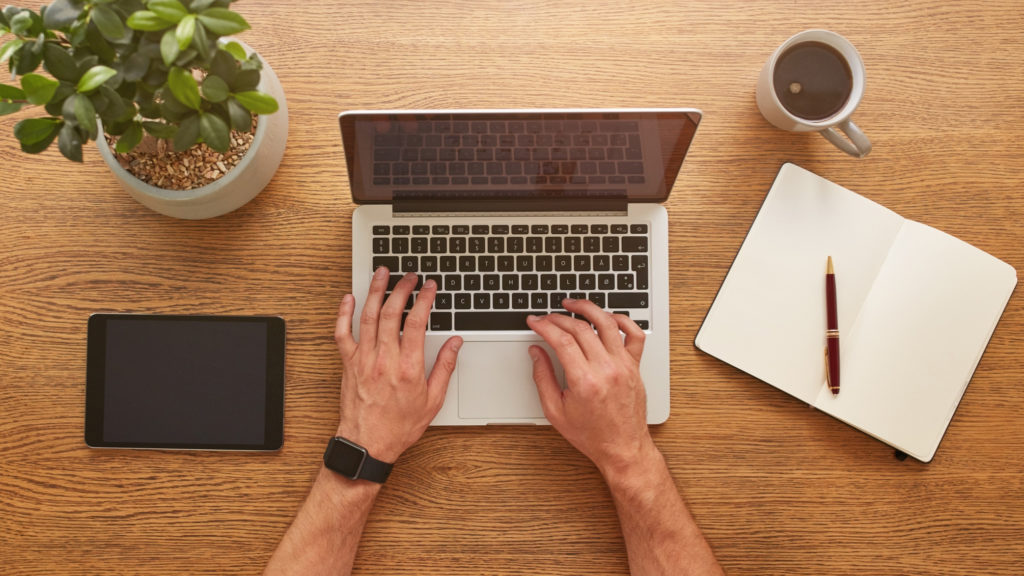
Directly above view of human hands typing on laptop. Laptop, digital tablet, diary, coffee cup and potted plant on work desk. Man working from home.
1. Choose portability versus power
Every laptop is a compromise between portability and power, and they all vary on where they draw that line. A faster and more capable machine needs bigger components and more room to keep them cool—which means it will end up larger, heavier, and more battery-draining than a less powerful computer.
As portable computing power has improved over the last few years, this compromise has become less of an issue. Decent processors and graphics chips now slip into very svelte laptop frames. However, it’s still true that if you want a laptop capable of the most demanding tasks—gaming and video editing, for example—then it’s going to be relatively chunky.
The other obvious factor that affects portability is screen size, which is usually listed first in a laptop’s specs. Go for a bigger screen, and you’ll have more room for your Excel spreadsheets and Netflix movies; opt for a smaller one, and you’ll get something that’s easier to slip into your messenger bag. Today’s laptop displays range from roughly 11 to 17 inches.
You can find laptops to suit every point along the portability-power scale, so decide which is most important to you. How much of your time will you be spending carrying your laptop from place to place? Will it have to last a long time between battery charges? How much heavy use do you want to get out of it? Answer a few of those questions, and you can find the ideal size range for your needs, which will quickly pare down the list of suitable choices.
2. Pick an operating system
With its Windows 10 system, Microsoft continues to push for a unified operating system for tablets and laptops. That means they’ll be offering a more varied range of laptops that can double up as tablets and vice versa. From detachable screens to clip-on keyboards, you can find Windows 10 machines in all kinds of shapes and sizes, often with touchscreens and styluses (something Apple saves for its iPads) in tow. As for the software itself, it’s hard to make generalizations about millions of computers. Very broadly speaking, Windows still gets the best software first: The development on programs like Google Chrome and Microsoft Office typically runs ahead of the Mac equivalents. On the downside, Windows has a bigger malware and virus threat to deal with, which is why it comes with Windows Defender built in.
Meanwhile Apple devices are very Apple-focused. You get a ton of software for free—more so than with Windows—and macOS usually runs more smoothly and with fewer hiccups than Microsoft’s operating system does (again in a very general sense). These computers will also play nicely with other Mac machines, iOS devices, and Apple products in general—but not so nicely with non-Apple hardware. Like iOS, macOS is a fantastic software package for people who like the way Apple does things. If you’re less of an Apple loyalist, however, you might find it a bit limiting. You’ll also have fewer models to pick from, and typically have to pay a premium for a macOS laptop versus a Windows laptop with similar specs.
One final operating system option is Chrome OS from Google and the Chromebooks that run it. When Chrome OS launched in 2009, it seemed unnecessarily limiting to have an operating system that was just a browser. But as web apps have become more powerful, and Wi-Fi has become easier to find on the go, Chromebooks are now a compelling choice for a lot of laptop buyers. You can’t run Photoshop or iTunes or the full Microsoft Office on them, but Chromebooks have several advantages. They don’t suffer from the same gradual slowdown that other laptops tend to suffer; they’re ultra-secure, with no way for viruses or malware to get installed; and they keep all your files constantly backed up in the cloud. You can usually get these devices for very good prices as well. If you’re looking for basic on-the-go computing, this option may be right for you.
3. Select your specs
The central processing unit, also known as the CPU or simply the processor, is the brains of the operation, controlling all the calculations that hum through your laptop’s circuitry. To find out how capable a computer’s CPU is, look for references to a clock speed (in gigahertz), which is how fast the thinking gets done. Also keep an eye out for the number of cores, which are basically mini CPUs in their own right: More cores means more simultaneous thinking.
These specs are often hidden behind brand terms. Take Intel’s labels of i7 and i5: i7s are top of the line, while i5s are mid-range. Watch out for the generation of the chip too (Intel’s seventh generation CPUs are appearing in 2017). A new generation means better performance with less Apple a1280 laptop battery drain. That’s why, when a new generation of processors arrives, you’ll often see laptop ranges updated across the board.
Another important spec is the RAM, which essentially controls how much your laptop can think about at any one time. More RAM means more support for lots of browser tabs, bigger images, more open applications, and so on. Basically, RAM lets you have a lot more going on without forcing your machine to come to a grinding halt. 4GB is the absolute minimum these days, though if your needs are even slightly demanding, you’ll probably want to go above that.
There are a few other specs to consider. The hard drive size indicates the amount of room a computer provides for files and applications. If you’re planning to keep your videos, photos, and music on your machine (as opposed to storing them in the cloud), make sure the hard drive you buy can handle all of your data with room to spare. Also pay attention to the number of input and output ports a laptop offers. If you’re planning to connect up a lot of peripherals, such as an external hard drive, a mouse, or wired speakers, pick a number of ports that will accommodate all of them at once. Finally, different machines offer different special features, such as the Touch Bar on MacBook Pros, so keep an eye out for the perks that suit you.
4. Don’t forget price and hands-on appeal
The one big factor in your decision that we haven’t talked about yet is price. If you’re on a budget, then this is another way to quickly narrow down the choice of laptops. To save yourself some cash, look for older models that have since been superseded by something new. This is a particularly good option if you know you won’t be taxing your laptop too hard and thus won’t need cutting-edge specs.
Two final tips: Use laptop reviews in tech publications to get a sense of which machines are currently impressive more than others, and actually walk into a store to handle some sample laptops. This can give you a feel for screen sizes, build quality, and so on—even if you intend to buy online. Enjoy your shopping!
Review:Dell Precision 7720
The 17.3-inch Dell Precision 7720 is not your typical battleship workstation. Although we expect the giants like this is short battery life, this machine lasted more than 9 hours on a single charge. It also sports a bright, vibrant display; strong sound; and a comfortable keyboard. Add optional components, such as Xeon processor and NVIDIA Quadro graphics card, and you have a 3D model of notebook computer, professional video editing or engineering. However, slow-moving SSD in our unit has obvious effect on its performance score.
Specs
| CPU | Intel Xeon E3-1535M v6 |
|---|---|
| Operating System | Windows 10 Pro |
| RAM | 8GB |
| RAM Upgradable to | 64GB |
| Hard Drive Size | 256GB |
Design: Do you even lift, bro?
If the Road Runner were speeding around the world, that dastardly Wile E. Coyote could forgo Acme-branded anvils and just drop the big, bulky Precision 7720 instead. The notebook’s size and heft make it such a colossus that it’s too cumbersome to use in your lap, unless you love weight lifting.
As hard as the Precision is to lift, it’s still easy on your fingers. Its soft-touch, carbon-fiber-coated lid and soft keyboard deck feel great and make for a better overall experience.
Weighing 7.6 pounds and measuring 1.4 inches thick, the Precision 7720 is similar to the 17.3-inch Lenovo ThinkPad P70 (7.6 pounds, 1.2 inches) and heavier than the MSI WE72 7RJ (6.2 pounds, 1.3 inches). The 15.6-inch Dell Precision 5520, the 7720’s smaller sibling, is a more portable, 4.4-pound machine that measures 0.4 inches thick, as is the 15-inch ZBook Studio G3 (4.6 pounds, 0.7 inches)
An abundance of ports is a major upside to behemoth-class notebooks such as the 7720. On the left, you’ll find a USB 3.0 port, a Thunderbolt 3 port, HDMI-out, a mini DisplayPort and a smart card reader. The right side includes three USB 3.0 ports, a headphone jack, a security lock slot and an SD card reader. An Ethernet jack and the power port are tucked away on the rear.
Durability and Security: Pay-per-option
The Precision 7720 is built to withstand the rigors of business travel. According to Dell, the laptop passed 15 MIL-SPEC durability tests, including those for extreme temperatures, dust blasts, shocks and drops.
IT managers will appreciate the 7720’s many security and manageability options. The machine comes standard with a smart card reader and TPM encryption. You can also pay extra for a fingerprint reader or an NFC sensor. If you configure the laptop with a compatible CPU, it will also have Intel’s vPro remote management technology inside.
Display: Shines so bright
Our test unit of the Precision 7720 features the notebook’s optional 1920 x 1080-pixel display panel, which offers vivid color and crisp detail. When watching a Spider-Man:Homecoming trailer on the Precision 7720, I noted vivid red, blue and gold tones in Spidey’s and Iron Man’s outfits, as well as the grain of the videotape footage of the vintage Captain America’s Fitness Challenge.
According to our colorimeter, the Precision 7720’s reproduces a strong 126 percent of the sRGB spectrum (anything above 100 is good). That’s just higher than the 122 percent category average and better than the reading from the Dell Precision 5520 (113 percent). Higher marks came from the HP ZBook Studio (169 percent), the ThinkPad P70 (158 percent) and the MSI WE72 (196 percent).
The Precision 7720 produced accurate colors, netting a 0.3 on the Delta-E test, where lower numbers are better, That beats the 1.35 desktop-replacement average, as well as the scores from the ZBook Studio (2.4), the ThinkPad P70 (0.7) and the Precision 5520 (1.5). The MSI WE72’s 0.4 brings it to a close second place.
Emitting up to 317 nits of brightness, the Precision 7720 outshines the 290-nit category average, as well as the readings from the ZBook Studio G3 (241 nits), the ThinkPad P70 (277 nits) and the MSI WE72 (200 nits). The Precision 5520 (335 nits) gets even brighter. Unfortunately, the display isn’t strong enough for its colors to stay vivid when you view the screen at 45 degrees to the left or right.
Keyboard, Touchpad and Pointing Stick: Great, solid and good enough
The Precision 7720’s input devices provide comfortable means for typing and navigating the system. When I tested out the keyboard on the 10fastfingers.com typing test, I hit a rate of 81 words per minute, which narrowly tops my 80-wpm average. Its keys offer 1.8 millimeters of travel and require 69 grams of force to actuate; both measures fall within the range we hope to find (1.5 to 2.0 mm, 60 grams).
The notebook’s 3.9 x 2.0-inch trackpad is flanked by two sets of left, right and center buttons that give a solid feel to each click. It also tracks input accurately and accepted Windows 10’s three-finger navigation gestures.
Dell gave the Precision 7720 one of its concave pointing sticks. It’s OK but still below the standard held by Lenovo’s TrackPoints (found in the ThinkPad P70). That’s because, although Dell’s may be accurate, Lenovo’s convex version doesn’t require as much effort and is easier to use.
Audio: Strong and sweet, after tuning
The Precision 7720’s speakers blast enough volume to fill our large conference room. While testing it out with a variety of tracks, I heard strong bass and crisp drums, but I wanted vocals (such as Carly Rae Jepsen’s singing on “Run Away With Me”) to sound clearer.
I fixed that issue and gained more balanced audio by adjusting the settings in the Waves MaxxAudio Pro sound utility.
Performance: Check RAM before clicking Buy
Armed with an Intel Xeon E3-1535M v6 CPU, 8GB of RAM, Nvidia Quadro P3000 graphics and a 256GB PCIe Class 40 SSD, our review configuration of the Precision 7720 packed enough brawn for speedy performance. I saw no slowdown after splitting my screen between a streaming 1080p YouTube video and 15 Chrome tabs that included Google Docs, Slack and TweetDeck. The system, which sports a CPU made for demanding programs such as AutoCAD, stayed zippy as I loaded more apps, including OneNote, Camera, Photo and Edge.
Unfortunately, although our unit came with a PCIe NVMe SSD –the fastest type — the Toshiba XG4 drive Dell equipped it with was slow and held back the Precision 7720’s scores on a number of tests. If you configure it with a 512GB PCIe Class 50 SSD, it could be faster.
This Precision 7720 scored a 11,402 on the Geekbench 3 general performance test, which falls below the 15,833 desktop-replacement average, as well as the 14,276 from the ZBook Studio (Xeon E3-1505M v5, 32GB RAM), the 13,518 from the ThinkPad P70 (Xeon E3-1505M v5, 16GB RAM), the 14,702 from the MSI WE72 (Core i7-7700HQ, 32GB) and the 15,437 from the Precision 5520 (Xeon E3-1505M v6, 32GB RAM).
The 256GB M.2 PCIe SSD in the Precision 7720 duplicated 4.97GB of multimedia files in 30 seconds, for a rate of 169.64 MBps. That’s slower than the 531.34 MBps category average, as well as the speeds from the 512GB PCIe SSD in the ZBook Studio (508.92 MBps), the 512GB PCIe M.2 SSD in the ThinkPad P70 (848.2 MBps), the 512GB SSD in the MSI WE72 7RJ (848.2 MBps), and the 512GB M.2 PCIe SSD in the Precision 5520 (462.66 MBps).
Our Precision 7720 took a relatively slow 4 minutes and 8 seconds to match 20,000 names with their addresses in OpenOffice Calc. That’s longer than the 3:26 category average and the times from the ZBook Studio (3:23), the ThinkPad P70 (3:23), the WE72 7RJ (3:22) and the Precision 5520 (3:08).
Graphics & Gaming: Mixed results
If you want to do 3D modeling, the Precision 7720 could be right up your alley. The Nvidia Quadro P3000 GPU with 6GB of memory enabled the Precision to score a solid 2,143 on the 3DMark Fire Strike Ultra test. That’s better than the 825 from the ZBook Studio (4GB Quadro M1000M), the 1,856 from the ThinkPad P70 (4GB Quadro M4000M), the 1,324 from the MSI WE72 7RJ (4GB Quadro M2200) and the 980 from the Precision 5520 (4GB Quadro M1200).
The Precision 7720 can run demanding games, as it played Metro: Last Light at 32 frames per second, which cleared our 30-fps playability threshold. That’s below the 59-fps category average, tied with the ThinkPad P70 (32 fps) and smoother than the ZBook Studio (14 fps).
Don’t let the VR-Ready badge on Dell’s page for the Precision 7720 confuse you. Our test unit notched a 5.6 on the SteamVR test, which means that it just barely supports virtual reality, rendering titles in lower fidelity. The 9.1 category average means other desktop-replacement notebooks do a better job. For solid VR experiences, upgrade to the Quadro P4000 or P5000 GPUs, which, respectively, cost $280 and $1,109 more than the P3000 version.
Battery Life: Much more than we expect
The Precision 7720’s bulk makes it a pain to lug, but it can survive for a while when away from an outlet. It took 9 hours and 34 minutes for the Laptop Mag Dell precision m70 laptop battery Test to drain the workstation of its juice, which is longer than the 4:29 category average and the times from the ZBook Studio (5:08), the ThinkPad P70 (5:53) and the MSI WE72 (2:57). The Precision 5520 (11:57) lasts even longer.
Webcam: Yep, another meh-cam
Finding a low-quality webcam inside a nearly $3,000 laptop feels like sitting down to dinner at a five-star restaurant with a plastic spork. Selfies I took on the notebook softened my face so much that I looked like a character in rotoscoped films such as Waking Life and A Scanner Darkly.
Heat: Nothing to worry about here, folks
The Precision 7720 is cool to the touch. After we streamed 15 minutes of HD video on the notebook, our heat run registered acceptable (below 95 degrees Fahrenheit) temperatures on its touchpad (70.5 degrees), G and H keys (74.5 degrees) and underside (86 degrees).
Software: Standard and useful
The Precision 7720 comes with a few useful Dell utilities, including SupportAssist for system information and help, and Precision Optimizer for improving performance. Unfortunately, it also has all the bloatware that Microsoft bundles with Windows 10: Candy Crush Soda Saga, a trial of Sling TV, and Minecraft.
Configuration options
Our $2,863 test unit of the Precision 7720 features an Intel Xeon E3-1535M v6 CPU, 8GB of RAM, discrete Nvidia Quadro P3000 graphics, a 256GB SSD and a 1920 x 1080-pixel display.
That’s a major step up from the $1,599 entry-level version, which packs a Core i5-7300HQ processor; 8GB of memory; a 500GB, 7,200-rpm hard drive; integrated Intel HD 630 graphics; and a 1600 x 900-pixel panel.
Dell sells the Precision 7720 with a variety of display options, starting with a 1600 x 900-pixel panel, which is pretty weak for a laptop that costs at least $1,599. So make sure you spend the extra $29 to upgrade to the 1080p panel we had on our review unit, which offers sharper images and better color.
I’d recommend getting 32GB of RAM for $440 (bringing our config to $3,303). If you want to run demanding software, you should spend $392 for a Xeon E3-1505M v6 CPU, and if you’re interested in quality VR experiences, you’ll need to spend at least $721 for the Nvidia Quadro P4000 graphics.
While the Precision comes with only six-cell, 91-watt-hour Dell studio 1537 notebook batteries, you have two options. You can get either the default battery, which offers faster ExpressCharge refuels, or spend $50 to upgrade to a “Long Life Cycle” version, which will likely retain its ability to hold a lengthy charge for more years.
Bottom Line
The Precision 7720’s brilliant display is delightful, its lengthy battery life is better than most workstations’ and its performance is more than adequate for 3D graphics work. The only major downside we found is that its SSD was far slower than others we tested.
If you can make do with a smaller screen and no VR, consider the less expensive Precision 5520 ($2,621), which is faster and longer-lasting. However, if you want high performance and a giant screen, you’ll find the 7720 worth the investment.
How to Maximize Notebook Battery Life
There may be a time when you can’t charge the laptop due to the busy schedule. Because you don’t know when you’ll get the next chance to recharge your laptop, so you tend to overcharge. Do you still think your laptop battery isn’t as old as it used to be? Some of you have to think about the degradation of your laptop battery over time, mainly due to overcharge and other factors. This is a myth. Overcharge does not affect the battery life of your laptop. When your device is fully charged and stops drawing the power, it will not overcharge or damage the battery, leaving it inserted.
According to Shane Broesky, co-founder of Farbe Technik, “Leaving your phone plugged in overnight is okay to do, it will not drastically harm your device”.
“Your phone is very smart. Once it’s fully charged, it knows when to stop the power to protect your phone from overcharging.”
To understand this in a better way, let’s first talk about what overcharging means. Over-charging takes place when you keep charging the device even after its reached 100%.
Know about Batteries
Lithium-Ion Batteries
Lithium-ion batteries are type of rechargeable batteries and mostly used in modern laptops which can be charged hundred times as it has internal circuit that stops the electricity when its fully charged. Therefore, overcharging does not affect the laptop’s battery life.
Li-ion batteries have built in controller chips, which intercept it from overcharging. But sometimes it may possibly explode or burn if its overcharged.
Mac Notebook Batteries
Mac notebook batteries are mainly used for Apple products like, iMac, MacBook, MacBook Pro and MacBook Air, which comes with non -replaceable lithium polymer batteries. It is mainly used to provide maximum battery life in a compact space.
Smart Batteries
Smart batteries are rechargeable battery packs with a built-in BMS (battery management system). It is designed to use for portable computer such as a laptop. Generally, it runs 15% longer due to the increased efficiency.
Here are few hacks to Maximize Laptop’s Battery Life.
- Avoid Full Discharges
When a laptop’s battery is fully discharged, it forces a shutdown. As the battery uses a full charge cycle. So, don’t allow your laptop’s battery to drop to zero percentage. Make sure you stop using your laptop when you get any alert from your operating system about the battery is getting low. If you’re not using a Li-Ion battery, it is highly urged to fully discharge and recharge your TOSHIBA PA3817U-1BAS Laptop Battery once a month.
- Reduce Screen Brightness
The biggest power drain on your device is the screen and reducing the screen brightness of your computer can save 30minutes or more to your battery’s life. You can also adjust and manage the screen brightness by using the keyboard shortcuts. Simultaneously press Windows key and key “X” . It will take you to new window where you can make the changes in the screen brightness, which will help you to run your computer for a longer duration. It will work for all the versions of Windows.
- Change the power settings
By default, most of the laptops are set to Windows Balanced setting instead of Power Saver and each Power Plan’s setting can be customize individually. Go to Control Panel, then the power options and have a look which Power Plan is selected.
- Disable Wi-Fi, Bluetooth and Other Hardware Devices
Always disable Wi-Fi, Bluetooth and your other hardware devices when you’re not using them. It won’t take much time as Wi-Fi and Bluetooth both has key and switch combinations to disable it quickly. You may also use the Device Manager in the Control panel, and scroll down through the list of the hardware’s e. g, Bluetooth adaptor. If you will right click on it. It will provide you an option to disable it.
- Avoid extreme temperatures
It is highly recommended not to keep your devices in extreme hot and cold temperature. For example, store it indoors, avoid direct sunlight, keep your laptop cool and don’t forget your laptop in car during the hot and snuggly days.
- Disconnect remove unnecessary peripherals
It is known fact that, if you will leave a disc in your DVD drive then it will leave the negative impact on your laptop’s battery life. Any USB accessories intentionally or unintentionally left connected to your device can drain power. So, it is very important to disconnect them once you’re done.
- Manage your memory
If you have a habit of opening multiple tabs on your web browser, then you might save a little bit of battery life by culling those tabs. Running multiple programs together on your screen will not only slow down the speed of the computer, but allows you to use the free space (paged space) in your computer and it also enhances the battery life of the laptop.
- Get Rid of the screensaver
Getting rid of your favorite screensaver will surely maximize battery life of your laptop. So, you can run your computer for a little more time.
During the past few years, laptops have become an essential part of our lives and it is worth to make few adjustments, especially if you spend half of the day gazing at your laptop’s screen. We hope the above tips help you get more from your laptop battery and improve its life.
HP Announces Four New Notebooks to Court Creatives
HP announced four new notebook computer innovation in France at the Cannes Film Festival today continue to try to beat the market. (hey, this is superior than Coachella.) The notebook computer, including HP Spectre X2, HP Envy X360 and HP envy machine (13 inches and 17 inches, respectively), both in copper and silver to match their dazzling star chasing.
The HP Spectre x2 is HP’s new luxury detachable 2-in-1, with a 12.3-inch tablet with a 3000 x 2000 display, a detachable keyboard, 13-MP rear camera and 5-MP wide-view front camera with IR for Windows Hello. The CNC chassis comes in the copper and black colors we’ve learned to love from the Spectre line, and it comes with a series of 7th-gen Intel CPUs. It will start at $999.99 when it launches in June.
The company’s latest premium convertible is the 15.6-inch Envy x360, which comes in a slew of different configurations. That includes CPUs from both AMD and Intel and both black and silver color options. It comes with a high-precision stylus and will start at $699.99 in June.
The new clamshells are the HP Envy 13 and 17. The Envy 13, which you can read about here, is a real stunner with its all-metal chassis, almost zero bezel and a full HD, IPS display. The Envy 17 comes with an Intel Core i7 CPU, 4400mAh of Hp nc6400 notebook battery,16GB of RAM and Nvidia GeForce 940MX graphics. While the Envy 13 is available in June starting at $999.99, the Envy 17 is for sale now beginning at $1,099.99.
We’ll let you know just how good these laptops are for creatives (and everyone else) when they arrive in our labs.
Help and tips with more laptop batteries
Here are the tips and tips that can be followed to help extend or keep your laptop battery last longer after each charge.
Used power saver or recommended setting
Open the power settings by clicking the battery icon in the Systray. Make sure your laptop is set to either Power saver or xxxx Recommended where xxxx is the name of the company of the laptop, e.g. HP Recommended.
Decrease brightness
Decrease the brightness of your screen as much as possible by adjusting the power options as mentioned above.
Disconnect any accessories
Any external accessory such as a USB device, external backup, etc. is going to draw power from the computer. Make sure to unplug any of these devices when on Hp 484170-001 laptop battery. Using the touchpad instead of a USB mouse can also help battery life.
Keep your computer running fast
Make sure your computer is running at its peek performance by following the below suggestions. A computer that is running more efficiently is going to take less power.
- Make sure you’re computer has all the latest updates and driver updates.
- If you’re running Windows that you’re defragging the computer frequently to keep the hard drive from having to work too much.
- If you have an antivirus scanner on the computer make sure its scheduled scans are not going to be running while it’s running off of the battery.
- When working off a laptop try limit how much you multitasking you do. The more programs that are open the more processing it’s going to take.
- Lower the screen resolution.
Use hibernate instead of using standby
When closing the lid or pressing the power button make sure it’s set to go into hibernation instead of standby. When in standby the laptop is still using some power.
Don’t use or if available disable hardware peripherals
Try to avoid using the CD, DVD, or Blu-ray disc drive in the computer while running off the battery. If you want to listen to a CD, rip the audio from that CD to the computer and play the MP3 files.
Also, make sure to disable wi-fi if you’re not planning on using it.
Third-party battery utilities
Consider third-party battery utilities such as BatteryCare that can give you additional status and information on your battery.
Battery slice or extra battery
If your battery life still is still insufficient after following the above steps, you may want to consider getting an extra battery or battery slice.
Replace the battery
If after following the suggestions above your battery still doesn’t hold a charge it’s likely its capacity is depleted. We suggest replacing the battery.
Review:Dell Chromebook 3189
The Chromebooks are popular with school,because they are easy to use and easy to infect. A starting price of $329 ($349 test), DELL’s Chromebook 3189 operating system running on Google, but also for the tablet computer and tent mode, students can easily use the touch screen to display the students, when they work or interacts with a Android application, Google update its operating system support. Although these 11 inch laptops do not have the strongest or brightest screens, the Chromebook 3189 durable chassis, powerful audio and full day battery life make a good choice for young students.
Specs
| CPU | Intel Celeron N3060 |
|---|---|
| RAM | 4GB |
| RAM Upgradable to | 4GB |
| Hard Drive Size | 32GB |
How do I know how much battery life my notebook has left?
It’s important to keep a close eye on your battery status when using laptops and netbooks. Depending on your operating system, this can be done in several different ways.
Windows 10
In Windows 10, you can find out how much battery power you have by clicking on the Hp probook 4710s laptop battery meter icon located in the Windows Notification Area in the bottom right-hand corner of your screen.
Windows 8
In Windows 8, you’ll need to access the Desktop Environment by pressing the Windows button on your tablet or the Windows key on your notebook. When you get to the desktop, click on the battery icon in the Windows Notification Area in the bottom right-hand corner of your screen.
- What if I can’t find the battery meter icon on my Windows Desktop?
Windows 7, Vista, and XP
In Windows 7, Windows Vista, or Windows XP, click on the battery icon in the Windows Notification Area in the lower right-hand corner of your screen.
macOS
In macOS, click the battery icon in the menu bar at the top of your screen.
The icon displays the condition of the battery, tells you if the battery is being charged or drained, lets you know how much time is left to fully charge or drain the battery, and provides a list of any programs that are consuming a lot of power.
To configure the power consumption of your laptop, select Open Energy Saver Preferences… from this menu to bring up the Energy Saver options (which are also accessible from your System Preferences).
These options give you fine-grained control over how your laptop uses power. You can use the Battery / Apple Macbook Air A1369 AC Adapter buttons to create separate configurations for when the laptop is plugged in and using battery power.
Linux GUI
Operating systems that use the Linux kernelcan have many different types of GUI. Every Linux GUI is a little different, but most of them have a system tray and a menu bar with a battery icon.
For instance, the GUI of the Ubuntu operating system (pictured) has an icon very similar to the icon in macOS X. Clicking on the icon will provide you with specific information about the battery’s status, and access to various Energy Saver options.
If your OS has a different GUI and you cannot locate the battery meter or power management options, consult your documentation, or the official website of your OS.
Linux Command Line
From the Linux command line, you can use the acpi utility to display information about your battery provided by the ACPI (Advanced Configuration and Power Interface) daemon. The acpi utility is a quick and easy way to check how much charge your battery has left.
It is usually not installed by default, but it can be installed using most Linux packagemanagers. For instance, on Ubuntu or Debian systems, the acpi utility can be installed with APT, using the command:
sudo apt-get install acpi
Once installed, you can run the command without any options to display how much power your battery has left:
acpi
Battery 0: Unknown, 96%
For more options, you can view the acpi manual using the command:
man acpi
Viewing battery life on the battery itself
Some laptops have a power indicator on the physical battery itself. In the example shown above, pressing the button marked with the finger symbol would illuminate the lights to indicate the amount of battery charge remaining.
Asus Tips First Ryzen Gaming Notebook
After the announcement of the ryzen 7, AMD told us that its mobile version of CPU, “Raven Ridge”, will be laptop in the second half of 2017. Based on a teaser video, it looks like we’re going to get a formal announcement faster than we think.
Asus‘ gaming arm, the Republic of Gamers, has posted a brief video on YouTube showing a ROG computer (it looks a lot like the most recent ROG Strix GL553, at least from the back) over AMD’s Ryzen logo with the words “Something has awakened.” How mysterious!
The description has the hashtag #Computex2017, so we expect to see it at the Asus ROG press conference in Taipei later this month. Whether it will be part of a new line of laptops or new options for its existing models is still up in the air.
We’re still waiting on more information on AMD’s Vega chipset. The only announced Vega GPU, the Radeon Vega Frontier Edition, is a desktop card aimed more at machine learning than gaming. It’s possible that Asus will pair mobile Ryzen CPUs with Nvidia GPUs, or perhaps we’ll hear more about AMD’s plan for Vega in laptops with Asus a32-m50 laptop battery a whole lot sooner than expected.
The Ryzen CPU is AMD’s latest salvo in its long-fought war against Intel, and, based on benchmarks, the closest its ever gotten to Intel’s performance at a lower cost.

